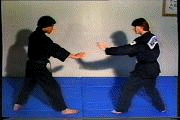Kuk Sul Hapkido Martial Arts
BE KIND, BE THRIFTY, BE HUMBLE

Hwarangdo
Hwarangdo Hwa is the Korean character for flower or the act of blooming. Rang means man, guy. Hwa rang do is interpreted as "Flower Knights" , "Flower Youths." Or "The way of the Flowering Manhood" Hwa Rang Do is a Korean martial art which was created by Dr. Joo Bang Lee and his brother, Joo Sang Lee. Hwa Rang Do trains and encourages martial arts techniques, spiritual teaching, educational achievement, and creativity. The term Hwarang does not exactly indicate "youth" or "boys Hwa Rang Do was named after the Hwarang, a powerful youth association of the Silla kingdom in the Three-Kingdoms period, in what is nowadays Korea. The Hwarang were an order of youths, usually from noble families, who were trained in artistic, educational, and military topics. Even though the administrator and practitioners of Hwa Rang Do claim that their system is inborn from the warfare technique used by the Hwarang, there is a great deal of disagreement among historians regarding whether the Hwarang were mainly a warrior order The requests and examination of numerous historians question Joo Bang Lee's allegation that Hwa Rang Do is a martial art developed from the fighting practices of an early warrior order. Farther moor question regarding the nature of the Hwarang order itself, it is known that he and his brother were both trained in other martial arts, from which the techniques of Hwa Rang Do could have been. It is a widespread understanding between martial artists and historians that modern Korean martial arts come from from the martial arts of other countries (mainly Japan) Japan tried to overwrite the native Korean civilization in their occupation of the Korea during WWII. Joo Bang Lee's detractors claim that Hwa Rang Do is a mixture of other, Japan-originated arts. Joo Bang Lee himself stated, in the interview, that in 1961 his own school was indorsed hwa rang do and hapkido. Photographs taken from demonstrations organized by his school in the late 1960's display logos commonly associated with kuk sool won and hapkido. In Hwa Rang Do, there are over 4,000 techniques, in addition to 108 weapons.
In, students are given belt or sashes to indicate their advancement Before
first dan (first black), the belt ranks goes from white
to half-black:
White Sash: Coo Kub (ninth grade) |